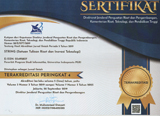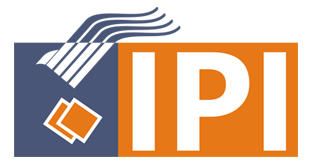Penilaian Tata Kelola Teknologi Informasi Pada Institusi Pendidikan Tinggi Menggunakan COBIT 2019
(1) Universitas Bina Nusantara
(2) Universitas Bina Nusantara
(*) Corresponding Author
Abstract
Information Technology (IT) Governance has an important role in managing and optimizing IT resources to support the achievement of the organization's vision and mission. In the higher education, the use of IT is needed to create and improve the quality of educational services. However, IT investments often made by many universities and colleges do not provide maximum benefits for the continuity of existing education services. Therefore, it is necessary to conduct an assessment of IT Governance at various universities and colleges in order to find out the level of capabilities and gaps that generally occurs. This research is a literature study that has the aim of analyzing IT Governance at various universities and colleges with reference to COBIT 2019.The research is conducted using Systematic Literature Review (SLR) method to answer Research Questions (RQ), namely RQ1 about the type of publication journal and article publication year, RQ2 about the domain of focus for higher education institutions, RQ3 about the capability levels and recommendations on gaps occurring in higher education institutions. The results of this study find as many as 8 articles consisting of 7 national and international journal articles as well as 1 proceeding article based on the inclusion and exclusion criteria set with a range of publication years from 2020 to 2022. Process areas APO04, APO09, APO12, BIA01, DSS05, MEA01 , MEA02, and MEA03 become the focus of attention for higher education institutions in the implementation of IT Governance. The current level of IT Governance capability at higher education institutions has not reached the capability target with recommendations for improvement in the form of fulfilling activities that have not been implemented at each capability level
Keywords
Full Text:
PDFReferences
W. Van Grembergen, Introduction to the Minitrack IT Governance and its Mechanisms HICSS 2007, Proceedings of the Annual Hawaii International Conference on System Sciences, vol. 9, p. 233, 2007, doi: 10.1109/HICSS.2007.292.
J. Luftman, T. Ben-Zvi, R. Dwivedi, and E. H. Rigoni, IT Governance, International Journal of IT/Business Alignment and Governance, vol. 1, no. 2, pp. 1325, 2010, doi: 10.4018/jitbag.2010040102.
G. L. Lunardi, J. L. Becker, A. C. G. Maada, and P. C. Dolci, The impact of adopting IT governance on financial performance: An empirical analysis among Brazilian firms, International Journal of Accounting Information Systems, vol. 15, no. 1, pp. 6681, 2014, doi: 10.1016/j.accinf.2013.02.001.
M. Saleh, I. Yusuf, and H. Sujaini, Penerapan Framework COBIT 2019 pada Audit Teknologi Informasi di Politeknik Sambas, Jurnal Edukasi dan Penelitian Informatika (JEPIN), vol. 7, no. 2, p. 204, 2021, doi: 10.26418/jp.v7i2.48228.
E. T. Rother, Systematic literature review X narrative review, ACTA Paulista de Enfermagem, vol. 20, no. 2, pp. 78, 2007, doi: 10.1590/s0103-21002007000200001.
L. H. Atrinawati et al., Assessment of Process Capability Level in University XYZ Based on COBIT 2019, Journal of Physics: Conference Series, vol. 1803, no. 1, 2021, doi: 10.1088/1742-6596/1803/1/012033.
K. Wabang, Y. Rahma, A. P. Widodo, and ..., Tata Kelola Teknologi Informasi Menggunakan Cobit 2019 Pada Psi Universitas Muria Kudus, (Jurnal Teknologi dan , vol. VII, no. 3, pp. 275282, 2021.
Priyono.Wasilah, Penilaian Tata Kelola Teknologi Informasi Menggunakan Framework Cobit 2019 ( Studi Kasus STMIK Pringsewu ), Prosiding Seminar Nasional , pp. 232240, 2021.
H. Nurcahya, E. Setiawan, and B. Permana, Information Technology Governance Audit Using COBIT Framework 2019 (Case Study: Mandiri University), Budapest International Research and Critics Institute (BIRCI-Journal)?: Humanities and Social Sciences, vol. 5, no. 1, pp. 80308038, 2022.
Samsinar; Sinaga Rudolf, Information Technology Governance Audit at XYZ College Using COBIT Framework 2019, Berkala Sainstek, vol. 10, no. 2, pp. 5867, 2022, doi: 10.19184/bst.v10i2.30325.
A. S. Sukamto, H. Novriando, and A. Reynaldi, Tata Kelola Teknologi Informasi Menggunakan Framework COBIT 2019 (Studi Kasus: UPT TIK Universitas Tanjungpura Pontianak), Jurnal Edukasi dan Penelitian Informatika (JEPIN), vol. 7, no. 2, p. 210, 2021, doi: 10.26418/jp.v7i2.47859.
A. Ishlahuddin, P. W. Handayani, K. Hammi, and F. Azzahro, Analysing IT Governance Maturity Level using COBIT 2019 Framework: A Case Study of Small Size Higher Education Institute (XYZ-edu), 2020 3rd International Conference on Computer and Informatics Engineering, IC2IE 2020, pp. 236241, 2020, doi: 10.1109/IC2IE50715.2020.9274599.
F. Ajismanto and S. Surahmat, Information Technology Governance Analysis Of Stmik Palcomtech In The New Normal Era Using Cobit 2019 Method, Journal of Computer Networks, Architecture and High Performance Computing, vol. 3, no. 2, pp. 263272, 2021, doi: 10.47709/cnahpc.v3i2.1097.
N. F. Najwa and T. D. Susanto, Kajian dan Peluang Penelitian Tata Kelola Teknologi Informasi: Ulasan Literatur, Jurnal Teknologi Informasi dan Ilmu Komputer, vol. 5, no. 5, p. 517, 2018, doi: 10.25126/jtiik.201855827.
Robert R. Moeller, Executive s Guide to IT Governance. 2013.
DOI: http://dx.doi.org/10.30998/string.v7i2.14326
Refbacks
- There are currently no refbacks.
Copyright (c) 2022 pratiwindya pratiwindya, Astari Retnowardhani

This work is licensed under a Creative Commons Attribution 4.0 International License.
STRING (Satuan Tulisan Riset dan Inovasi Teknologi) indexed by:

Ciptaan disebarluaskan di bawah Lisensi Creative Commons Atribusi 4.0 Internasional.
View My Stats


 Sertifikat Akreditasi
Sertifikat Akreditasi
















